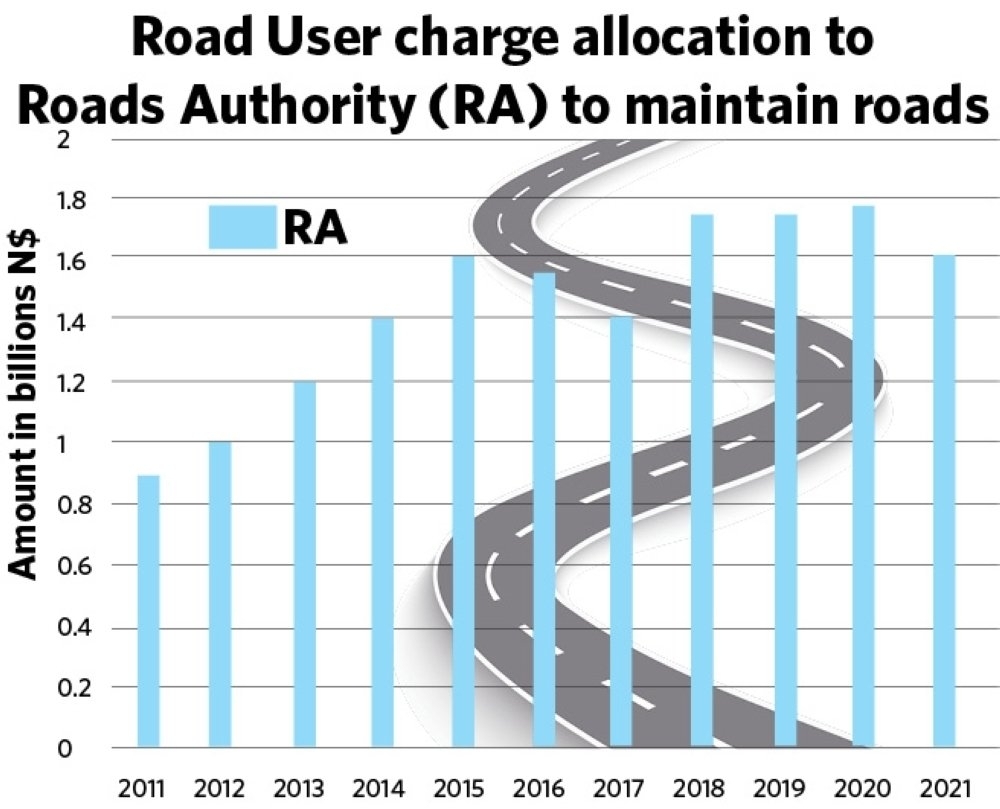Toll roads on the cards
Motorists could soon be forking out even more to keep their cars on the roads.
The Road Fund Administration (RFA) has concluded a study on the feasibility of implementing a toll road system, saying data shows that Namibia has sufficient traffic flows to support it.The administrator is currently heavily reliant on road user fuel levies to maintain Namibia’s 50 000 kilometres of road network, its acting CEO Patricia Keeja said.
“A feasibility study was concluded two years ago, which basically established that Namibia has sufficient traffic volumes to toll various sections of toll roads. This study has been shared with policymakers and support has been granted by a Cabinet committee to proceed with stakeholder engagements in this regard,” she said.
The use of tolling could be a necessary revenue stream as funds collected through fuel levies are expected to come under pressure, Keeja added.
“The world is moving away from internal combustion engines to electric vehicles and by 2030, most advanced economies will no longer manufacture vehicles with internal combustion engines. Thus, these vehicles will phase out soon thereafter.
Funding issues
“This creates a massive funding problem for us as a road fund, as 54% of our revenues come from fuel levies. Therefore, we have taken a strategic decision to transition towards distance-based road user charges, of which tolling is just one such user charge in our toolkit.”
The RFA, Keeja said, had good examples to draw from within the Southern African Development Community (SADC).
“The RFA does not have to look far on successful tolling examples as countries in the region namely South Africa, Malawi, Zambia, Zimbabwe and Mozambique have successfully implemented tolling.”
The administrator is now in the process of collecting cost information to determine what a network of toll plazas will cost and to determine the financial viability of tolling using the net present valuation of such a project, she said.
When asked what type of tolling system would be used, using the Windhoek-Okahandja route as an example, Keeja said it could comprise a toll booth with an operator at every exit.
“At the moment, we are looking at a closed tolling system with conventional boom down toll booths. What this means is that there will be a toll booth with an operator on every exit on the toll road. Windhoek to Okahandja, for example, has 20 exits,” she said. - [email protected]




